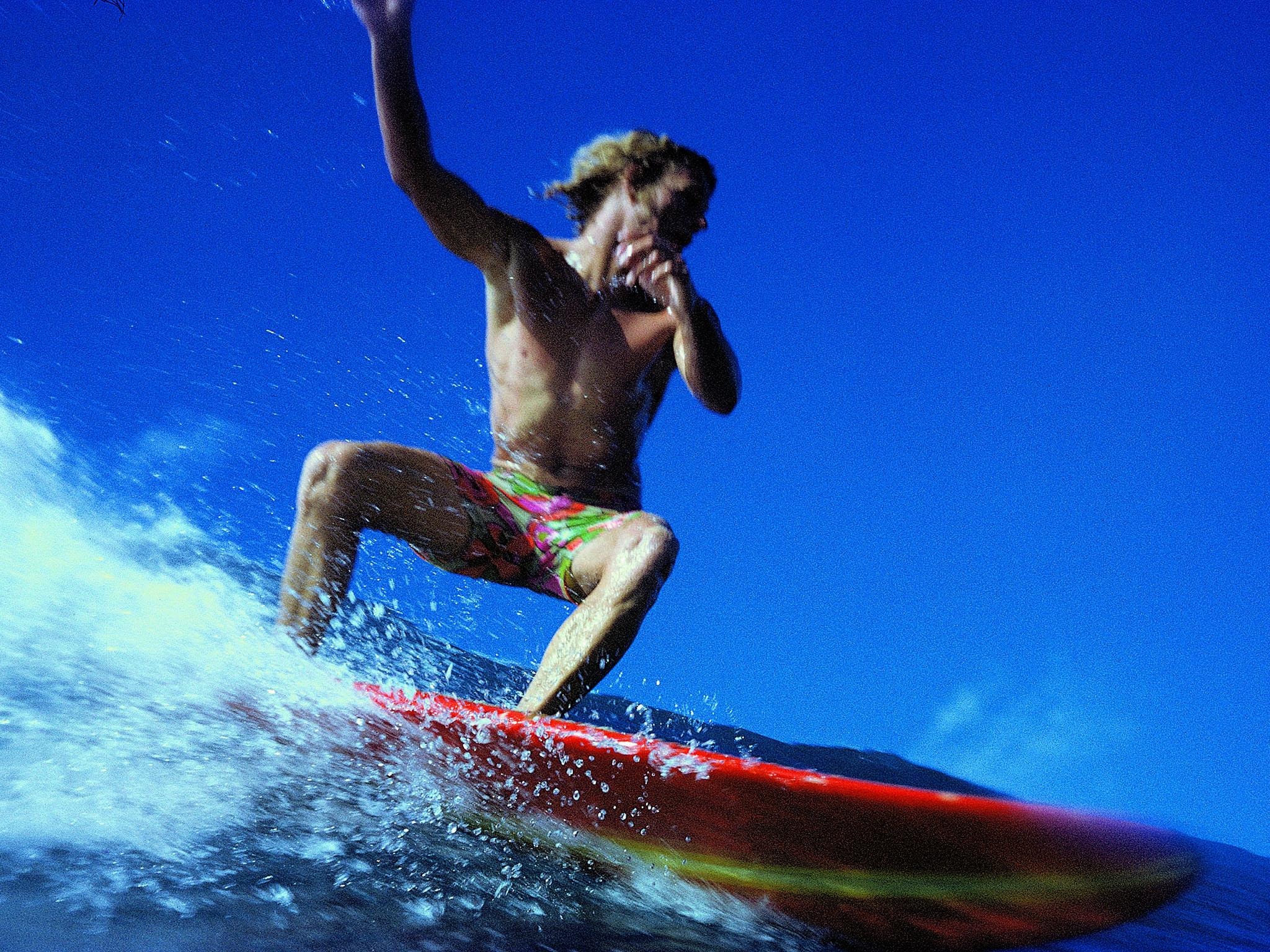The Independent's journalism is supported by our readers. When you purchase through links on our site, we may earn commission.
Catching the Perfect Wave: America’s most important surf photographer of the sixties and seventies
An innovator, LeRoy Grannis suction-cupped a waterproof box to his board, enabling him to change film in the water and stay closer to the action than any other photographer of the time

Your support helps us to tell the story
From reproductive rights to climate change to Big Tech, The Independent is on the ground when the story is developing. Whether it's investigating the financials of Elon Musk's pro-Trump PAC or producing our latest documentary, 'The A Word', which shines a light on the American women fighting for reproductive rights, we know how important it is to parse out the facts from the messaging.
At such a critical moment in US history, we need reporters on the ground. Your donation allows us to keep sending journalists to speak to both sides of the story.
The Independent is trusted by Americans across the entire political spectrum. And unlike many other quality news outlets, we choose not to lock Americans out of our reporting and analysis with paywalls. We believe quality journalism should be available to everyone, paid for by those who can afford it.
Your support makes all the difference.At a time when surfing is more popular than ever, it’s fitting to look back at the years that brought the sport into the mainstream.
Developed by Hawaiian Islanders over five centuries ago, surfing began to peak on the mainland in the 1950s — becoming not just a sport, but a way of life, admired and exported across the globe. One of the key image-makers from that period is LeRoy Grannis, a surfer since 1931, who began photographing the longboard era of the early 1960s in both California and Hawaii.
Grannis’s hair-raising, sold-out Collector’s Edition 'LeRoy Grannis. Surf Photography', curated from the photographer’s personal archives, showcases his most vibrant work from the bliss of catching the perfect wave at San Onofre to dramatic wipeouts at Oahu’s famed North Shore.
An innovator in the field, Grannis suction-cupped a waterproof box to his board, enabling him to change film in the water and stay closer to the action than any other photographer of the time.
He also covered the emerging surf lifestyle, from “surfer stomps” and hordes of fans at surf contests to board-laden woody station wagons along the Pacific Coast Highway. It is in these iconic images that a sport still in its adolescence embodied the free-spirited nature of an era—a time before shortboards and celebrity endorsements, when surfing was at its bronzed best.
The photographer
Leroy Grannis’s initial foray into surfing began at age 14, but it wasn’t until the age of 42 that he picked up a camera and made a career out of it. Under doctor’s orders to take up a hobby, Grannis built a darkroom in his garage and began shooting surfers at Hermosa Beach, and “Photo: Grannis” quickly became a hallmark of the California surf scene of the 1960s. Grannis is considered one of the most important documentarians of the sport, and was inducted into the Surfing Hall of Fame in 1966. He died on February 3, 2011.
‘LeRoy Grannis. Surf Photography’ by TASCHEN is available to purchase online
Join our commenting forum
Join thought-provoking conversations, follow other Independent readers and see their replies
Comments